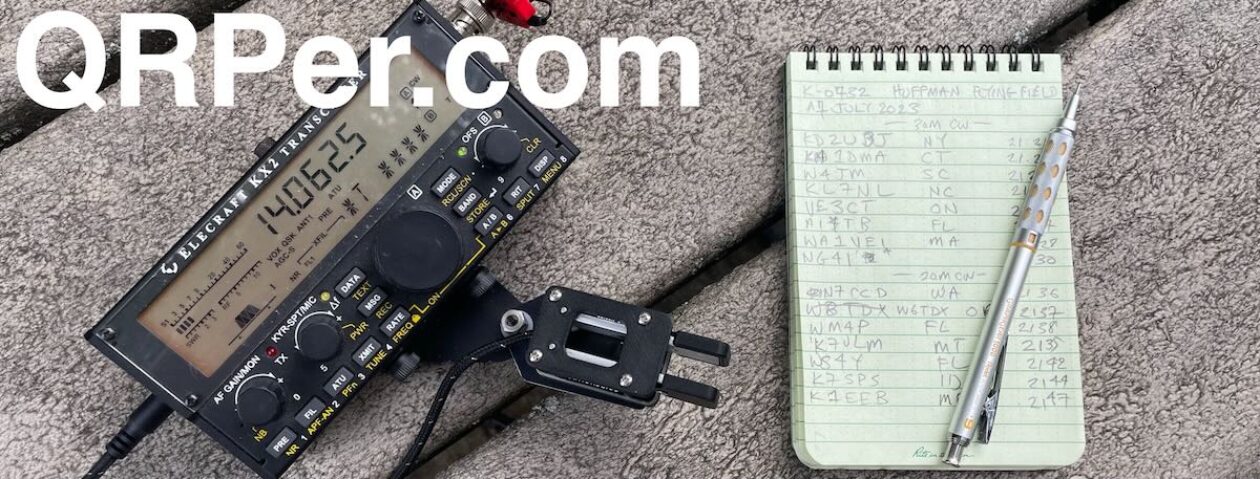 Many thanks to Peter (YO8CDQ) who writes:
Many thanks to Peter (YO8CDQ) who writes:
“Why don’t you enter in the log the received RST and the transmitted RST. I know you’re recording with a tape recorder, but the QSOs are real. If you want to send a QSL to a hunter, what kind of RST do you enter in the QSL?”
Great question, Peter, and I’ve been meaning to make a post about this because it’s one of the top questions I receive from readers (along with why I send 72 instead of 73).
The short answer is: it’s a personal preference.
When I log a rag chew or “non-OTA” contact from home–and one that’s under no time pressure–I typically record a true RST; both what I sent and what I received.
During POTA or SOTA, however, I do not log true signal reports. Some activators do, though. Again, it’s a personal preference, but here are some of the reasons why I do not:
I typically log on paper and on my phone in real-time. This means that when my hands aren’t sending my exchange, I’m logging as quickly as I can. I honestly don’t think I could keep up with my pace if I added RST to the mix even if just in the electronic logs!

The POTA and SOTA programs do not import RST info. When your logs are uploaded the RST info is ignored.
I rarely get paper QSLs and when I do, I can always look up the RST in my recordings if I feel it’s important to the other party. For example, I’ve received paper QSLs from DX county hunters (many of those programs require paper QSLs for confirmation) and I will look up the RST from my recordings if needed (it’s actually easy knowing the time stamps from the logs).
 Also, since I send an ear-accurate RST to my hunters/chasers, I feel like they’re getting value out of my report in real-time. Many don’t need or want that confirmed on paper weeks later or in other logging systems.
Also, since I send an ear-accurate RST to my hunters/chasers, I feel like they’re getting value out of my report in real-time. Many don’t need or want that confirmed on paper weeks later or in other logging systems.
 Recording RST to a logging app on my phone–during the activation–simply isn’t easy for me. I struggle just typing and double-checking the callsign I enter. Going back into the app or adif file to enter real RSTs from my paper logs after the fact would be time-consuming and a bit futile since, as I mentioned, POTA and SOTA does not import RST.
Recording RST to a logging app on my phone–during the activation–simply isn’t easy for me. I struggle just typing and double-checking the callsign I enter. Going back into the app or adif file to enter real RSTs from my paper logs after the fact would be time-consuming and a bit futile since, as I mentioned, POTA and SOTA does not import RST.
In the end, though, you’ll notice that most avid activators don’t record the RST because it simply takes time and it’s actually quite rare that the hunter or chaser needs a true RST even if they follow up with a QSL confirmation. If they need it or ask for it–again–I can probably provide it! Most don’t though, because they receive your report during the exchange.
Should you record RST?

If you want to? Heck yeah!
I’ll admit that recording the RST just makes for more complete looking logs. It’s also fun to go back through your logs and give them a once-over to see how a certain antenna might have been performing that day.
Most of the activators I know that record RST only log to paper in the field, then transpose the logs back home and enter RST. That is a much more elegant way to do things if you have the time and it’s important to you.
Since POTA and SOTA are on-the-air activities designed around having fun, do what you feel makes it fun!
How about you? Do you record accurate TX and RX signal reports during your activations? Please comment!





